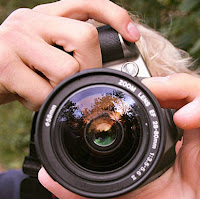 Do you make a list for everything? Or perhaps you prefer doing things on the fly. Do you know someone who lives their life through lists? By nature I’m not much f a list-maker, unless I’m under pressure, in whig a list hops clear my head. What is it though that makes us list-makers?
Do you make a list for everything? Or perhaps you prefer doing things on the fly. Do you know someone who lives their life through lists? By nature I’m not much f a list-maker, unless I’m under pressure, in whig a list hops clear my head. What is it though that makes us list-makers?
Last week it's was widely reported that male and female brains are wired up differently. According to the research by the University of Pennsylvania, neural circuitry in women make them more adept at at multi tasking; while men are better at perception. Naturally, this reinforces all the old stereotypes about men being from Mars and women from Venus. At the same time, it also backs up the research undertaken by Roger Sperry on the left and right hemispheres of the brain performing different types of functions - left logical, right creative. His work won him a Nobel prize in 1981.
Apart from the aforementioned reinforcement of gender stereotyping, there is a hint of the so what? about the research. But that would be a mistake. There’s a very powerful message behind this story, are goes far beyond to list or not to list.
Most people are familiar with the left/right brain split. What is less well known is the principle of the triune brain - 3 distinct stages of the brains evolution. The reptilian brain governs automatic functions such as breathing. The limbic system controls emotions, the flight or fight syndrome held over from man kinds earliest days. More recently the new cortex has developed and controls logical, rational thinking, the higher level thinking that sets us apart in the world.
 If you take those 2 sets of research and combine them (left right brain with the limbic system and neo cortex), you get 4 quadrants, each with their own distinctive pattern of thinking. A part of why people behave differently and are good at different things is because their brains are wired up differently. Understanding the power behind these differences and harnessing them brings out the best in people. It also offers an opportunity to reduce conflict and increase collaboration.
If you take those 2 sets of research and combine them (left right brain with the limbic system and neo cortex), you get 4 quadrants, each with their own distinctive pattern of thinking. A part of why people behave differently and are good at different things is because their brains are wired up differently. Understanding the power behind these differences and harnessing them brings out the best in people. It also offers an opportunity to reduce conflict and increase collaboration.
The Herrmann Brain Dominance Instrument HBDI) is a psychometric tool that creates a visual metaphor of the brains map, revealing the preferences for thinking and behaving.
One high profile example of the power of taking a whole brained approach is Coca Cola and how they applied the principles and tools behind the HBDI to the 2012 Olympic Torch Relay in the UK.
My own team understands the power of the HBDI and we regularly use it within our own business. Building our own team profile has enabled us to work together more effectively and given us a powerful approach to managing projects, communication and problem solving.
We have also built those principles into our ExtraMILE process, helping to align individual strengths and preferences with team and organisational goals. It’s amazing what the brain can do and understanding more about how it drives behaviour, makes a real difference to performance outcomes and job satisfaction.







